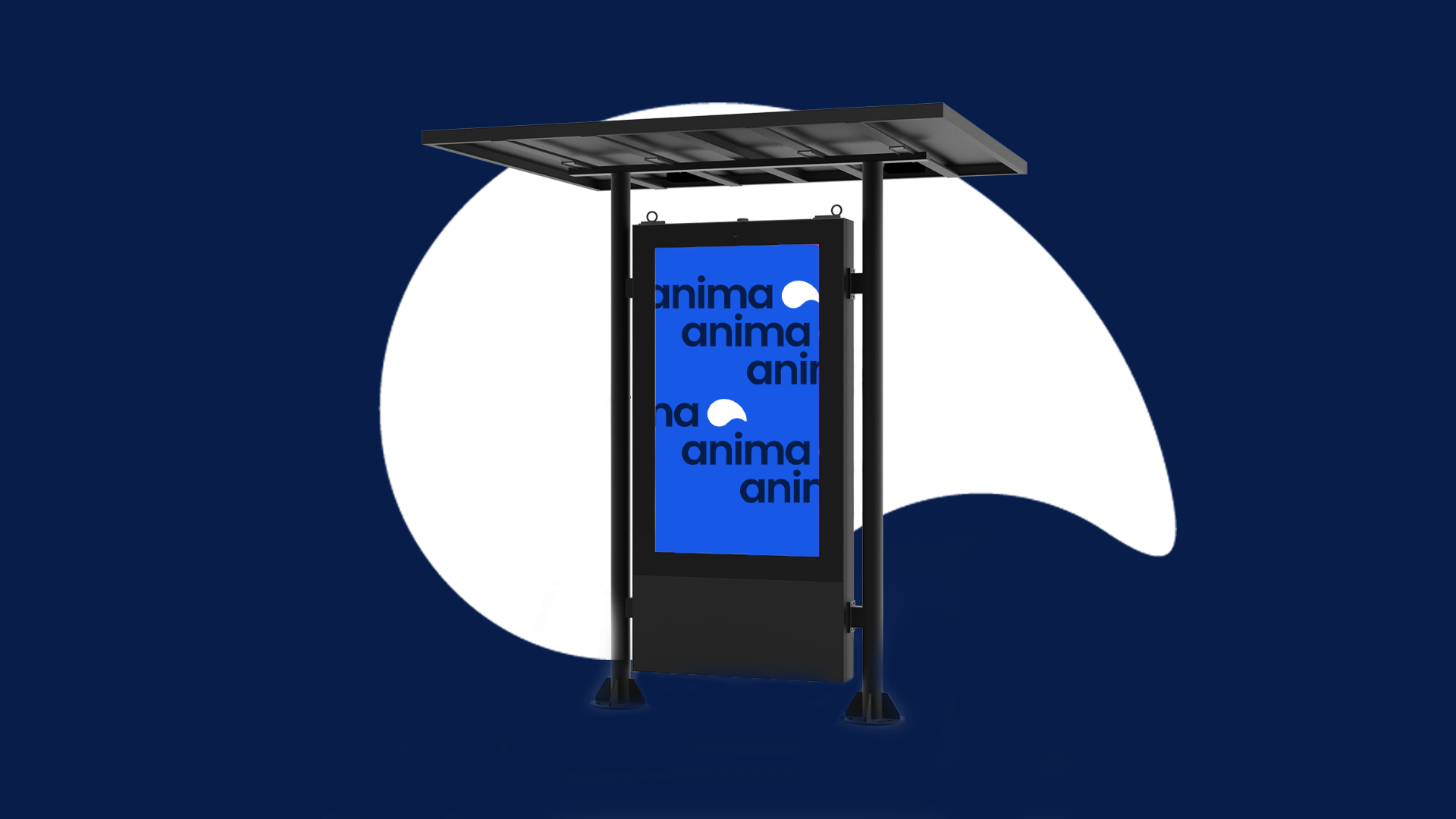Out of home advertising is undergoing a reinvention. What once was limited to static posters on bus shelters or citylight panels has now evolved into an interactive, sustainable channel with new uses that go far beyond simply displaying an ad. The rise of digitization, DOOH, and the integration of smart technologies are transforming how brands connect with people on the street.
But… Are we truly tapping into the full potential of OOH advertising, or are we still using a 20th century medium in the 21st century?
From Shelter to Experience: What Do Modern Street Furniture Ads Look Like?
Bus shelters, citylight panels and urban furniture are the most iconic formats in OOH advertising. Historically, they have been used to give massive visibility to campaigns located in areas of high pedestrian or public transport traffic.
Today, however, they go far beyond displaying a simple poster, offering new features such as:
- Digital screens and dynamic content: modern shelters and panels allow brands to display contextual messages based on time of day, weather conditions, or traffic.
- Interactivity: through sensors, QR codes, NFCs, augmented reality, or even 3D technology, these formats invite users to interact with campaigns in real time, generating greater engagement, impact, and brand recall.
- Integrated services: many shelters now include mobile charging stations, free Wi-Fi, or real-time public transport updates, transforming them into valuable touchpoints for citizens rather than mere advertising spaces.
New Uses: From Advertising to Public Service
As suggested above, the latest trend is to transform these outdoor advertising assets into useful spaces for the city and its inhabitants, creating more organic consumer impact while boosting top of mind awareness for the advertised brand. Real-life examples are already seen in major cities, including:
- Solar panels: shelters equipped with solar panels power LED lighting, reduce reliance on non-renewable energy, and enable more eco-efficient advertising. (If you want to know more about the eco-friendly world in outdoor advertising, don’t miss our blog: Advertising and Sustainability)
- Air filters: some panels filter polluted air, an initiative seen in cities like London and Madrid, improving air quality in high-traffic areas.
- Footfall-activated campaigns: intelligent PDOOH screens now activate ads only when pedestrian traffic is high, optimizing investment and reducing energy use.
- Social impact campaigns: many shelters already function as climate refuges, offering misting systems in summer to mitigate extreme heat and heaters in winter to make waiting for public transport more comfortable. These initiatives not only enhance citizen experience but also reinforce positive perception and brand loyalty. Some formats are even used to share emergency information, turning them into vital public service channels.
Can Outdoor Advertising Really Be “Green”?
Today’s audiences don’t just expect impactful messages, they expect brands to act responsibly and contribute to improving their surroundings. A panel that offers shade or a shelter that provides useful information creates a memorable experience and strengthens the emotional connection with the brand.
While traditional perceptions associate OOH with mass printing and high energy consumption, current data tells a different story:
- Low carbon footprint: a digital panel emits roughly 55 g of CO₂ per 1,000 impressions, significantly lower than TV (828 g) or print media (9,067 g). When combined with solar panels and LED lighting, as mentioned earlier, this footprint is reduced even further.
- Reusable structures: urban furniture is permanent; it doesn’t require new infrastructure for every campaign. With an average lifespan of 15–20 years, or even longer for well-maintained shelters or backlit panels, the ecological cost is spread across hundreds of campaigns.
- Efficient digitalization: transitioning from printed posters to digital screens eliminates paper and toxic inks while reducing waste generated during each campaign changeover.
Key Strategies for Integrating Bus Shelters and Street Furniture into Modern Campaigns
- Leverage hyperlocality: tailor your message to the context of each site, its exact location, demographic profile, and time of day.
- Incorporate real-time data for relevance: use dynamic information: weather, traffic, local events, even trending topics… to deliver contextual messages that boost impact and memorability.
- Create phygital experiences: turn the physical format into a bridge to digital interactions via QR codes, NFCs, apps, augmented reality, or social media integrations. This extends user engagement beyond the first visual impact and allows for measurable touchpoints.
- Measure and optimize environmental footprint: evaluate the ecological impact of each asset in your media plan, prioritizing low-energy screens and renewable-powered options. This approach not only reduces emissions but also reinforces a responsible brand image to increasingly conscious audiences.
- Transform the medium into a service for the city: Incorporate features that add real value to the community like: seating, shade, climate shelters, mobile charging stations, or useful wayfinding. These hybrid uses strengthen the relationship between brand, community, and public space.
Conclusion: The Future of OOH Is Smart and Sustainable
Bus shelters and citylight panels are no longer passive supports; they are evolving into urban communication and service hubs. Brands that embrace this shift will not only gain visibility but also relevance and reputation in a context where communicating with purpose is just as important as the message itself.
Ready to turn your next outdoor campaign into a useful, innovative, and sustainable experience?
Let’s talk.

